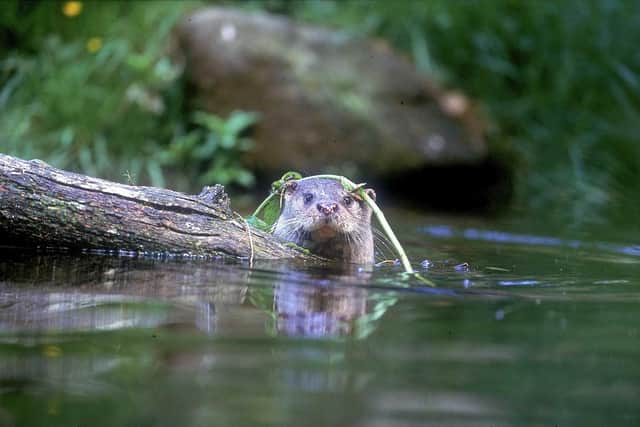Protecting Yorkshire's waterway wildlife in the face of climate change is getting harder: Jonathan Darnell
But here in Yorkshire so far this summer, the opposite could be said – we’re enjoying a particularly long spell of hot days, with intermittent, intensive falls of rain, before the sunshine and heat return. A lovely change for us humans, perhaps, but not for some of our wildlife, which has been suffering in these dry, hot conditions.
There’s no doubt climate change is happening, and it’s hitting our waterways, including Canal & River Trust’s 2,000 miles of rivers and canals.
Advertisement
Hide AdAdvertisement
Hide AdIt’s our charity’s mission to protect and preserve these waterways - including the 320 miles of canals and rivers in Yorkshire – and the wildlife that lives there.


Our waterways have become vital in our urban and rural communities in providing crucially important habitat for wildlife. The water quality in our canals is better than at any time in history, with flourishing flora and fauna proving their worth as an important haven for nature, with fish and other aquatic life forming a vital part of canals’ ecology.
Canals and rivers have also become popular places for people to enjoy and experience nature.
Which is one reason it’s distressing to hear of fish deaths in waterways across the country, including here in Yorkshire. Whilst any instances of fish in distress are upsetting, hearing of so many separate cases at the same time is unprecedented and is a great cause for concern.
So why is this happening – and what are we doing about it?
Advertisement
Hide AdAdvertisement
Hide AdFish need oxygen for respiration and as the water temperature rises in the summer, the amount of oxygen in the water naturally reduces. Normally, for most fish species, this is not an issue.
However, the current dry spell has resulted in weirs running dry, which oxygenate the water in rivers and canals. Canals and rivers should have a dissolved oxygen level of above 80 per cent, but during this hot, dry spell, levels in some areas have dropped to as little as three per cent.
Heavy storms have significantly reduced oxygen levels further; the deluge of rainfall falling onto extremely dry land means the water simply runs off without soaking in, which in turn pulls dust, silt and gravel into the water. All of this has combined to cause unprecedented drops in oxygen levels in the water, causing these devastating fish deaths.
At Canal & River Trust, our teams of qualified and experienced fisheries specialists, environmental scientists and ecologists work closely with stakeholders, landowners and partners to ensure that we can all ‘do our bit’ to protect nature within our assets.
Advertisement
Hide AdAdvertisement
Hide AdAnd as an environmental scientist dedicated to the Yorkshire region, I’ve been able to respond quickly to this incident, sampling the affected areas to ensure no pollution events have occurred - the usual causes for such a drop in oxygen levels, if connected with pollution, would be algal growth due to excessive phosphorous and nitrogen in the water.
But our analysis has shown levels to be stable, ruling out pollution as a contributory factor.
Collaborating with our fisheries advisors, we’ve organised aeration devices to be placed in the affected areas to stabilise the oxygen levels during the continued hot, dry spell. This increases the oxygen levels in the water and provides the fish with the amounts they need. And we’ve liaised with the Environment Agency (EA), the regulatory body for UK water quality, to ensure that the situation is monitored and dealt with to the best of our ability.
This is just one example of the vital work Canal & River Trust undertakes to ensure the vital upkeep of our ageing 250-year-old canal network, and caring for the wildlife living in these waterways, in the face of climate change – and as we’re a charity, we couldn’t do this without essential funding.
Advertisement
Hide AdAdvertisement
Hide AdThis is especially crucial at a time when Canal & River Trust’s existing annual Government grant (fixed with no allowance made for inflation over the period to 2027) is reducing significantly in real terms.
Beyond 2027, it seems highly likely the Government will seek to reduce its annual grant contribution, piling further pressure on the resources available to look after the network in the longer-term.
We need everyone’s support in looking after our waterways and the nature within and alongside them – and there’s plenty you can do. You could donate your time and join our dedicated team of volunteers who work tirelessly to help us preserve the ecology of our waterways and assets.
And if you see wildlife in distress, please call the EA.
Together, we can all make a difference and protect our waterways - and the wildlife that has made canals and rivers their home.
Jonathan Darnell is an environmental scientist for the Canal & River Trust